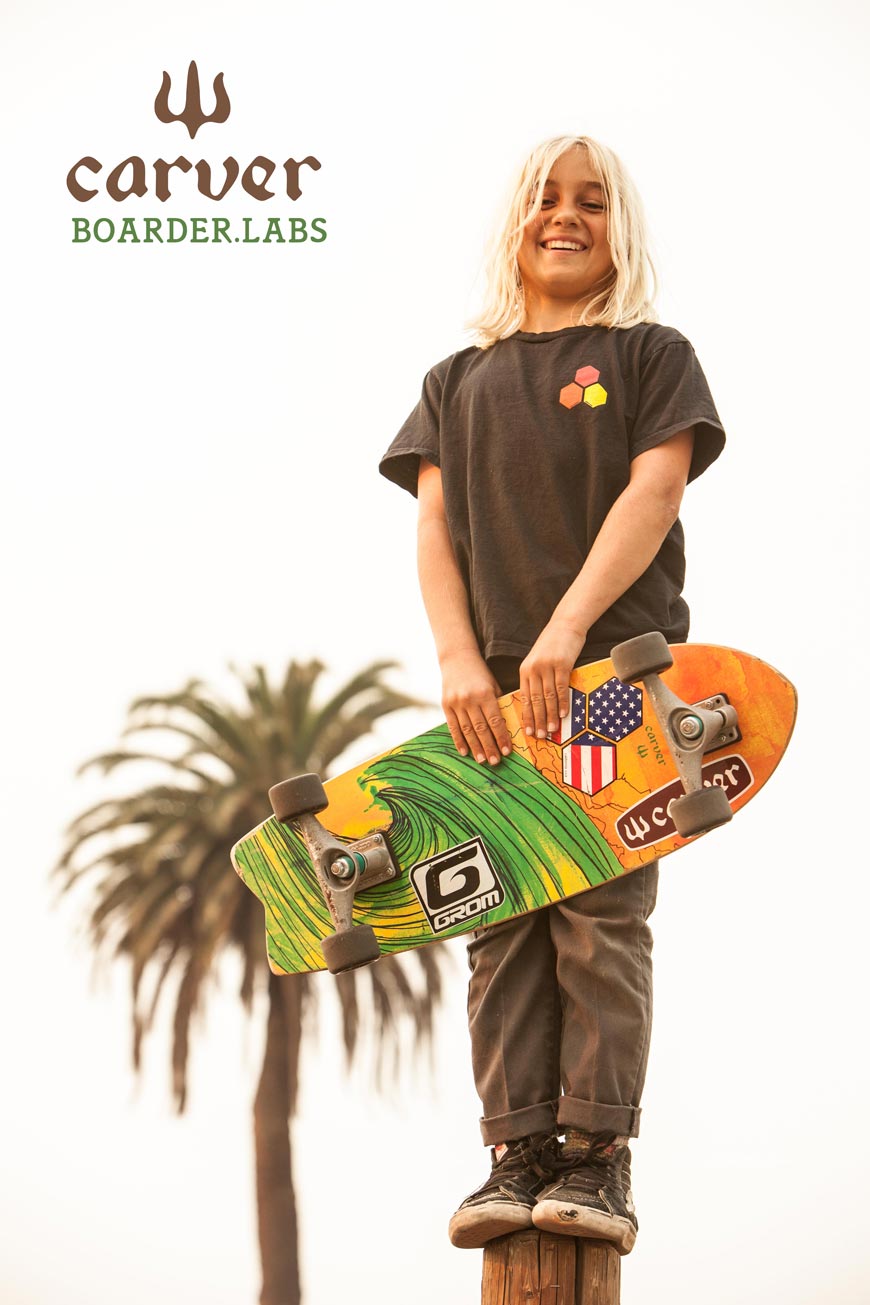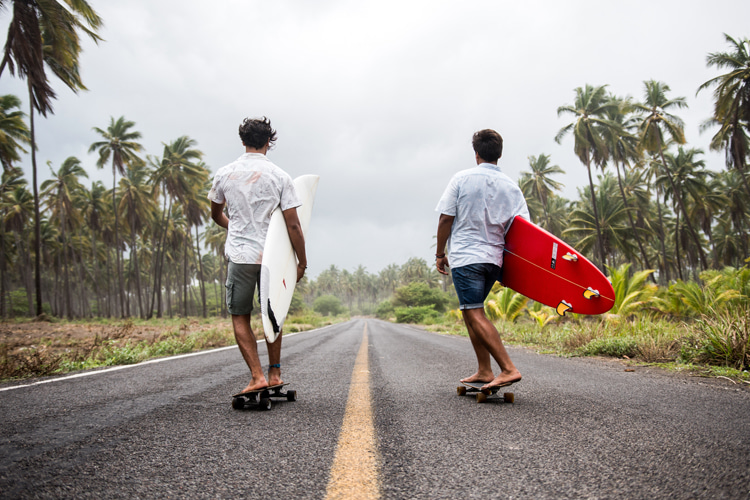Longboarding originated in hawaii in the 1950s as a way for surfers to practice on land. Since then, it has gained popularity as a recreational activity and competitive sport worldwide.
Longboards are longer than traditional skateboards, providing a smoother ride and better stability for cruising and downhill racing. With various shapes, sizes, and designs, longboards cater to different riding styles and preferences. In recent years, longboarding has also become a means of transportation in urban areas, as it allows for a faster and more eco-friendly alternative to driving. This article will explore the rich history of longboarding, its evolution, and its current status as a beloved hobby and sport.

Credit: www.longboarderlabs.com
Origins Of Longboarding
The origins of longboarding can be traced back to the popular surf culture that emerged in the early 1940s and ’50s in hawaii and california. As surfers looked for new ways to ride the waves, they experimented with different board designs and materials.
This experimentation eventually led to the development of the longboard; a longer, wider surfboard that was better suited to catching and riding larger waves.
Discuss How Longboarding Evolved From Surfing
Longboarding evolved from surfing as surfers wanted to replicate the experience they had on their surfboards onto land. Longboards allowed them to continue riding and carving on concrete surfaces in much the same way they would carve on waves. Originally, longboards were simply surfboards with wheels, but eventually, board shapes were altered and refined specifically for skating on land.
Describe The Early Designs And Materials Used For Longboards
The early designs for longboards were heavily influenced by surfboard shapes and materials. In the late 1950s and early 1960s, longboards were made from balsa wood, which was lightweight and easy to shape. Later, fiberglass and foam were used in the construction process.
The boards were typically longer and wider than traditional skateboards, which gave riders more stability and control.
Talk About How The Sport Was Initially Embraced In California In The 50S And 60S
Longboarding was initially embraced in california in the 1950s and 1960s by surfers who were looking for new ways to ride waves. As they experimented with different board designs and shapes, they began to ride their boards on land. This new activity quickly gained in popularity, and soon, communities of longboarders began to form.
In 1963, the world’s first skateboard manufacturer, makaha, began producing longboards and skateboards, which helped to further popularize the sport. Today, longboarding continues to grow in popularity, with riders all over the world carving and cruising on longboards of all shapes and sizes.
Development Of Longboarding
Longboarding is a sport and mode of transportation that has grown in popularity over the years, with a rich history that dates back to the 1950s. The development of longboarding is a fascinating story, and it is interesting to explore the design developments that led to the creation of specific longboarding styles such as “downhill” and “slalom”.
We will also explain how longboarding became popular in other areas beyond california. Plus, we will highlight famous skateboarders and surfers who contributed to the development of longboarding.
Explore The Design Developments That Led To The Creation Of Specific Longboarding Styles Such As “Downhill” And “Slalom”
- Longboarding design developments included changes in board shape, trucks, and wheels.
- The introduction of the “drop-through” board style allowed riders to be closer to the ground, providing better stability at higher speeds.
- The use of reverse kingpin trucks allowed for sharper turns and better control.
- The development of wider and larger wheels provided better traction and smoother rides.
- These design developments led to the creation of different longboarding styles, such as downhill and slalom, each with its unique techniques and features.
Explain How Longboarding Became Popular In Other Areas Beyond California
- Longboarding grew in popularity in other areas as more riders discovered the sport through online communities and social media.
- The spread of skate parks and events helped to introduce and promote longboarding in different regions.
- The availability of affordable and quality longboarding gear made it easier for riders to experiment with the sport and develop their skills.
- The culture of longboarding, which values inclusivity and creativity, has helped to foster a welcoming community that encourages participation and growth.
Highlight Famous Skateboarders And Surfers Who Contributed To The Development Of Longboarding
- Tom blake, a legendary surfer from the ’40s and ’50s, pioneered the use of longboards in surfing and inspired the creation of longboarding as a sport.
- Larry stevenson, founder of makaha skateboards, was one of the first to produce and distribute longboards to the general public.
- Tony alva, a powerful skater known for his creativity and style, helped to popularize longboarding and inspire new tricks and techniques.
- Peggy oki, a female skateboarder, surfboard shaper, and artist, broke gender barriers in the sport and helped to promote longboarding as both a competitive and creative pursuit.
Longboarding has come a long way since its early days, and the sport continues to evolve with each passing year. From design developments that led to the creation of new styles to the spread of the sport beyond california, and influential figures who contributed to the growth and popularity of longboarding, the sport and its history have so much to offer.
The Rise of Surfskates (Explained)
Longboarding In Popular Culture
Longboarding has been around for decades and has long been a popular activity for thrill-seekers and sports enthusiasts. However, in recent years, longboarding has become increasingly popular in popular media and culture. From movies and books to fashion and art, longboarding has left an impact on various aspects of contemporary culture.
In this section, we’ll examine how longboarding has appeared in popular culture, how it has influenced fashion and art, and its impact on contemporary culture.
Examine How Longboarding Has Appeared In Movies, Books, And Even Music
Longboarding has played a significant role in popular media, appearing in movies, books, and even music.
- The movie lords of dogtown is a classic example of longboarding in popular culture. The movie chronicles the early days of skateboarding and longboarding in california.
- Another popular movie that features longboarding is the longboard chronicles. It is a documentary that provides an in-depth look at the longboard community.
- In the book longboarding: the essential guide, author steve cave explores the history of longboarding and its culture.
- Longboarding has even made its way into the music world. The band sublime famously croons about the thrill of longboarding in their song, “caress me down.
Discuss The Impact Of Longboarding On Fashion And Style
Longboarding has had a significant influence on fashion and style, inspiring new trends and looks.
- Longboarding has inspired a laid-back, surfer-style look that emphasizes comfort. Loose, flowing clothes like maxi dresses and board shorts are popular among longboard enthusiasts.
- Accessories are also a significant part of the longboarding style, with bandanas, sunglasses, and trucker hats being the go-to items for riders.
- Clothing brands like volcom, vans, and quiksilver have embraced the longboarding community, even featuring longboarders in their advertising campaigns.
Explain How Longboarding Influences Contemporary Art
Longboarding has had a significant influence on contemporary art, with many artists incorporating longboarding into their works.
- Many artists have created pieces that depict longboarders in action, capturing the beauty and fluidity of the sport.
- Longboarding has also inspired street artists and graffiti artists. The walls of urban areas around the world are often adorned with colorful murals that feature longboarders.
- Some artists have even taken their love of longboarding to the next level, creating sculptures and installations that incorporate longboards into the artwork.
The Future Of Longboarding
Longboarding, a thrilling sport with roots in skateboarding, is steadily growing in popularity around the world. Over the years, longboard decks and wheels have undergone some significant transformations, making the sport more accessible to riders of all skill levels. Although longboarding is still relatively new, its future is looking bright as it continues to evolve.
Discuss Current Developments In Longboarding Technology
Longboarding technology has come a long way since the sport first emerged in the late 1940s. Today, manufacturers are inventing a wide range of parts and gear to enhance the longboarding experience.
- Specialized longboard decks designed for speed, carving, or cruising seeking different experiences.
- The new age of truck technology has given longboarders an opportunity to customize their boards by changing the baseplate, bushing, kingpin, hanger, and pivot cups.
- The latest wheels are large, soft, and allow riders to effortlessly glide over cracks and rough pavement, offering an enhanced riding experience.
Highlight How The Sport Continues To Evolve
One of the remarkable things about longboarding is that it continues to evolve in many ways. From tricks to the introduction of electric longboards, the sport is always pushing its boundaries.
- Freestyle longboarding has become more expressive than ever before with the incorporation of dancing, sliding, and flip tricks. Riders have a chance to showcase their individual styles.
- With the introduction of electric longboards, longboarding is becoming accessible to a wider range of people. This creates endless opportunities for riders to make commuting more convenient, easier, and faster.
- As the sport continues to grow and evolve, longboarding is gaining recognition as an extreme sport. This could lead to the creation of more formal competitive events and professional riders bringing longboarding to the masses.
As we’ve seen, longboarding has developed significantly since it first emerged as a spin-off to skateboarding. New technology and innovations continue to open doors in the sport, lending to the belief that longboarding’s future is bright. Whatever happens next, it’s clear that the joy and passion around this sport will keep it rolling for many years to come.
Conclusion
The history of longboarding goes hand in hand with the origins of modern skateboarding. Longboarding is more than just a pastime, it’s a passion and a way of life for many people. From its humble beginnings as a surfing alternative to the spread of its popularity across the globe, longboarding has seen many changes and evolutions.
Today, longboarding is a recognized sport with its own culture, events, and even professional riders. As this sport has evolved, so too has the technology used to create longboards, with advancements in materials and designs allowing for greater speed and maneuverability.
While the future of longboarding is uncertain, one thing is for sure: it will continue to captivate the hearts and minds of those who ride, and those who simply admire the beauty and grace of this unique sport.



